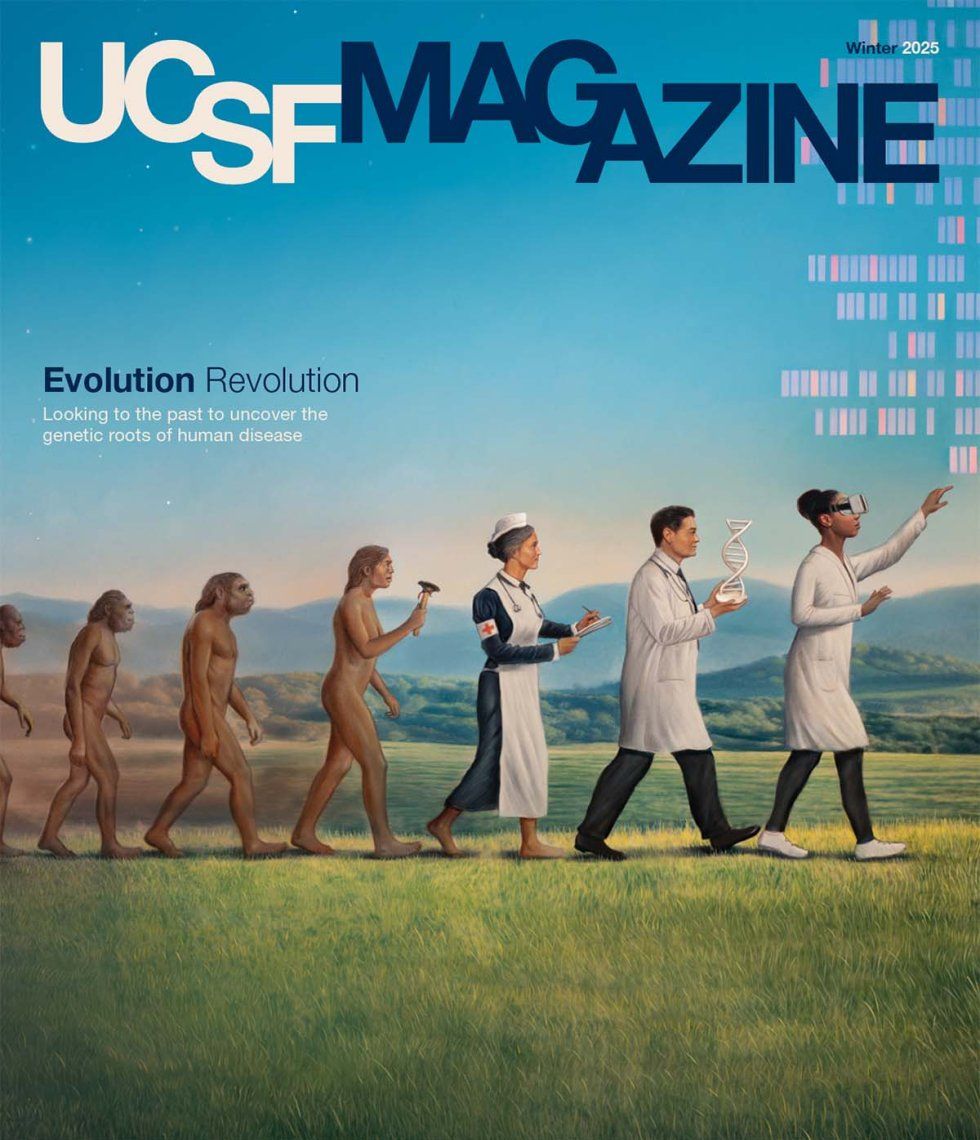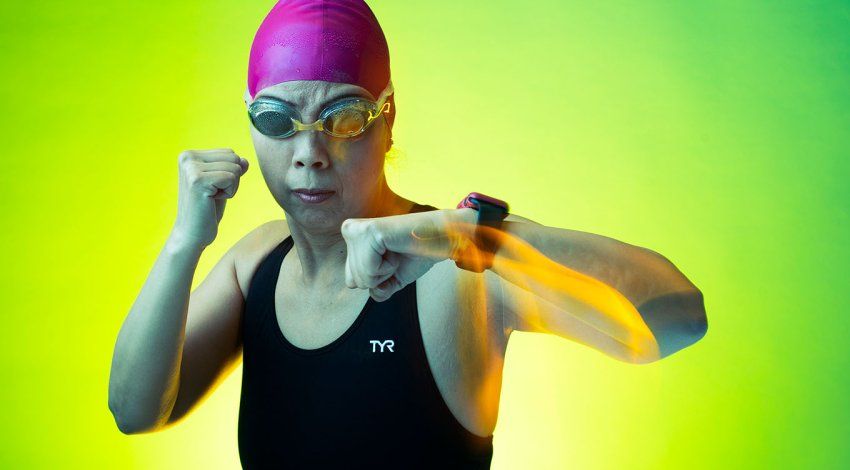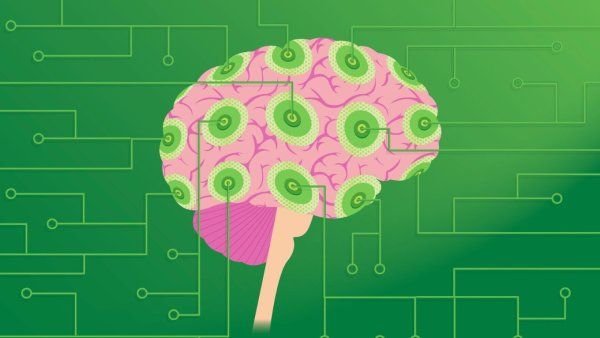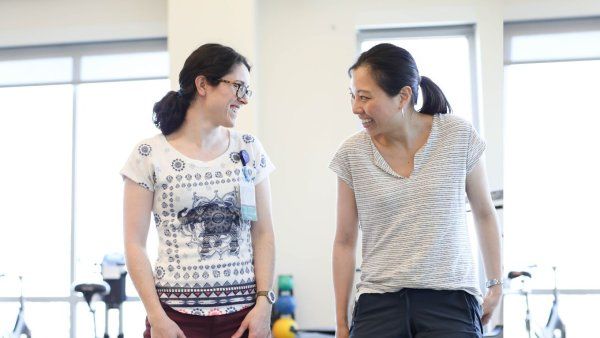
What’s the Truth About Healing from (or Preventing) Injuries?
Common advice runs the gamut from spot-on to flat-out false. What’s best for our bodies?
Animation: Farah Hamade
Recuperating from an injury involves many considerations, and determining the most effective approach can be confusing. Experts in UCSF’s Department of Physical Therapy and Rehabilitation Science explain best practices in injury recovery and prevention.
Myth #1
No pain, no gain.
“Pain is part of our lives. It’s protective. If you step on a nail or touch a hot stove, pain kicks in to protect your body,” says Megan Yamashiro, DPT ’16, an assistant clinical professor. But if pain is ongoing or occurs without a clear trigger, it should be investigated.
Also, not all pain is the same. “Is it sharp or shooting pain? Is there numbness or tingling? Physical therapists will suggest different parameters to determine pain. If it’s a green or yellow light, maybe we can forge ahead,” she says. “If we are helping with an Achilles tendon issue, for example, some low-level pain can encourage healthy tissue changes to strengthen the tendon. But in some cases, like acute frozen shoulder or adhesive capsulitis, it’s not helpful to push through pain. That’s a red light, and we’ll do something else instead.”
Ivan Arriaga, DPT ’18, an assistant clinical professor, says it’s usually in people’s best interest to begin moving soon after an injury, within tolerable limits. “If something hurts when you start doing it, and it feels better as you continue, your body’s saying that’s what you need. But if you experience ongoing pain and feel like you can do even less, that’s counterproductive.”
“When you start a new exercise program, some muscle soreness lasting a day or two is common,” explains Richard Souza, PhD, a professor and the department’s vice chair of research. “Providing that pain is gone by the next morning, you can probably progress slowly.” But if you have persistent pain that occurs each time or gets worse, he suggests seeing a physical therapist.
“Listen to your body before it starts yelling at you,” Yamashiro says. “If we pay more attention to those conversations, we can prevent a lot of problems.”
Listen to your body before it starts yelling at you. If we pay more attention to those conversations, we can prevent a lot of problems.”
Myth #2
If I hurt my back, I should lie flat in bed.
Back pain can be scary. And people may fear they might not be able to regain mobility after a severe episode. But according to Luc Fecteau, DPT, an associate professor, the sooner you restart your daily activities, the smoother your path to recovery.
“During physical therapy, we’ll watch how the back responds to different treatments. When the pain is acute, we use light movement and modalities to try to bring the pain down. Then, as soon as someone can tolerate a little more, we can progress,” he says.
That said, a condition that causes numbness, weakness, or loss of bladder control is an urgent situation that requires further exploration, Fecteau adds.
A physical therapist may also serve as a de facto primary care provider. “Based on our training and education, we decide if each case is a treat, refer, or treat and refer scenario. It’s never too early to get a consult if you’re concerned about a more serious injury,” Yamashiro says.
Myth #3
You’re ruining your neck by constantly gazing down at your phone.
“Using your phone isn’t necessarily harmful to your neck – but not moving can be,” says Yamashiro. “Try changing positions at least every 30 minutes. Vary sitting and standing. Use AirPods or headphones. The more you can change positions, the better.”
Fecteau agrees. “We’re not designed to stay static. We’re designed to be moving. Our joints get nutrients through compression and decompression cycles of our cartilage, which acts like a cushion protecting our bones. Without movement, the cartilage doesn’t get the nutrients it needs. If we keep the same position for a prolonged period, we’re asking for trouble.”
Myth #4
Running ruins your knees.
Souza would like to dispel this long-standing legend. It’s simply false, he says.
“The biggest predictors of knee osteoarthritis are a high body mass index, knee malalignment, and a previous knee injury – for example, people who have torn their anterior cruciate ligament or their meniscus or had other major injuries within their knee,” explains Souza. He does note that “one study shows that your odds are slightly higher if you were a very competitive, fast marathon runner. But for recreational runners, the evidence is definitely not there. However, if you’ve never run and at 50 or 60 want to start, you must do it very carefully. Your articular cartilage – the tissue that covers the ends of bones where they form joints – and other tissues aren’t used to running, so injuries can occur. Slow transitions are the key to doing it safely.”
Myth #5
I can’t improve my running or walking biomechanics.
It’s never too late to adjust how we move. And it starts with gait modification, says Souza.
Walking and running involve complex actions at each joint, which affect your joint and muscle health, he explains. During gait analysis, a physical therapist assesses how your joints work together and your overall movement.
“Physical therapists can evaluate the alignment between your hip, knee, and ankle. We want to see proper alignment of the leg during loading phases. It’s common for runners to have their knees collapse inward. That kind of form has been associated with injuries like iliotibial band – also called IT band – syndrome, kneecap pain, or stress fractures,” notes Souza.
To address concerns like these, physical therapists work with patients to build strength, improve motor control, and train their muscles to contract with the right timing so they can move effectively and safely.
Myth #6
I can’t function without the latest newfangled shoes/gear/treatment.
The right tools can encourage people to move more, but one size doesn’t fit all. And most of the evidence doesn’t point to the latest gadgets making a measurable difference, say Fecteau and Souza.
“However, there’s a lot in science we still don’t understand,” adds Souza. If you find something works for you, he says, but “research doesn’t necessarily support it right now, that doesn’t mean it’s not effective.”
Myth #7
As I get older, I can’t do as much.
You may not be able to complete the same workouts in your 70s as you did in your 20s, but that doesn’t mean you should throw in the towel. All athletes benefit from improved strength. For example, runners who keep going well into their eighth decade may trade a couple of daily runs for resistance training, Souza says.
“One of the best things you can do as a runner are squats and lunges. They’re multi-muscle, multi-joint exercises. If you do them correctly, with attention to form, you’re exercising the exact muscles you need,” he says.
Yamashiro also points out that any activity calls for adaptability in mind as well as body. She says she’s met patients from 9 to 99 years old, and the ones who get to keep doing what they love share one asset: flexibility.
“Being able to evolve with your body is difficult. We see ourselves in the past, and we want to relive that feeling or athletic moment. It’s OK to acknowledge your limitations while continuing to push the boundaries – maybe with a different activity. There’s something beautiful about being able to change and adapt,” she adds.




